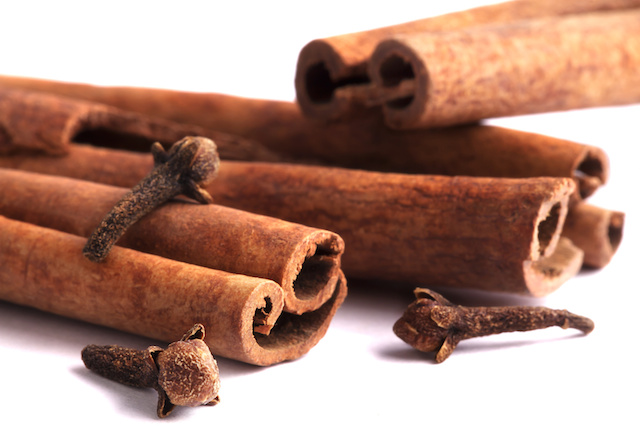Cinnamon Essential Oil Profile
Cinnamon essential oil (Cinnamomum verum) evokes memories of holiday baking, warmth or even the turning of the seasons. The essential oil can be used...

Eucalyptus is also known as Eucalyptus globulus and Eucalyptus radiata.
Eucalyptus contains both the dried mature leaves from older trees in the species, as well
as the essential oil extracted from the plant. The oil is rich in a substance known as 1,8 cineole or eucalyptol. This active ingredient is also the ingredient which poses a risk to very young children.
This tall tree is native to Australia and Tasmania but can now be found in many parts of the world. The action claimed by some is that it clears up nasal passages; however, the documented action is not clearing passages but rather improved breathing. This is a mild, but important distinction. It is also highly effective against many forms of pathogens.
Inhalation of eucalyptus and peppermint oils is often used for upper respiratory health, but spraying the oils directly on the throat in a sore throat spray has been found to effectively reduce upper respiratory symptoms including sore throat, hoarseness, and cough. These results are rapid, with symptom reduction apparent only 20 minutes after application.
Eucalyptus EO has been used to treat URIs in children for over 100 years. It is a core ingredient in Vicks Vapor Rub and helps to promote clear breathing. In a 2010 study, a vapor rub was compared to placebo to establish efficacy and safety for nighttime coughing. Eucalyptus was found to reduce cough severity, congestion, and sleep difficulty for both children and parents.
Eucalyptus EO is used topically to produce a feeling of clear breathing as well as internally to boost immune function without increasing inflammation in the body. A 2008 study evaluated the effects of eucalyptus oil on the immune system in both an in vivo and an in vitro setting
and found that eucalyptus oil was able to successfully stimulate the immune system, improving immune function, without stimulating the production of pro-inflammatory cytokines, which are linked to many immune disorders.
Under trained administration, 1,8 cineole (the active component of eucalyptus EO) was
ingested at 200mg, 3x a day to volunteers who suffer from asthma. The outcomes being measured were quality of life, asthma symptoms, and lung function. After the six month treatment period, the cineole patient group had significantly greater scores in all three areas (Worth & Dethlefsen, 2012). Note that internal dosing requires advanced training in aromatic medicine, so this should not be attempted at home without taking the Aromatic Medicine course.
Similarly to the above study, 200mg of 1,8 cineole 3x day was administered to 242 COPD
patients over a 6 month period (which included wintertime). The treatment boosted lung function by reducing airway inflammation (Worth, Schacher, & Dethlefsen, 2009). Again, internal dosing should not be attempted without training in Aromatic Medicine.
Eucalyptus oil must be diluted prior to topical application or ingestion. Because dosing is
critical, it should be diluted into a semi-solid preparation such as a balm or ointment, not merely combined with a carrier oil. This prevents accidental spread of the application to a greater portion of the body. For internal use, aromatic medicinal preparations should always be used.
In topical applications, results can be achieved with as little as 1-3% total concentrations of
eucalyptus essential oils. While greater concentrations can be safely used for specific purposes, it is rarely necessarily to exceed 3% total for an otherwise healthy adult with a total of 1-2 tsp per application, 2-3 times per day. For children 2-6, 1% concentration is sufficient as a chest rub with 1/2 tsp a sufficient dose up to 2-3 times per day.
For use in a sore throat spray, a total dose of 1/4 to 1/2 drop per application, up to 3-4 times a day in an otherwise healthy adult is the maximum level of exposure without additional training in aromatic medicine. Aromatic medicine professionals use larger doses to boost immune function and shorten the duration and intensity of viral infections but this requires training beyond the scope of this profile.
Worth, H., & Dethlefsen, U. (2012). Patients with asthma benefit from concomitant therapy with cineole: a placebo-controlled, double-blind trial.Journal of Asthma, 49(8), 849-853.
Worth, H., Schacher, C., & Dethlefsen, U. (2009). Concomitant therapy with Cineole (Eucalyptole) reduces exacerbations in COPD: a placebo-controlled double-blind trial. Respiratory research,10(1), 1.

Cinnamon essential oil (Cinnamomum verum) evokes memories of holiday baking, warmth or even the turning of the seasons. The essential oil can be used...

Clove is commonly known as cilantro, but is also known as Coriandrum sativum.

Echinacea is also known as Echinacea angustifolia, Echinacea purpurea, purple coneflower, coneflower, and snakeroot.